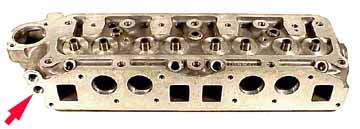Datsun Roadster Parts from Rallye Enterprises, Ltd. |
|
|
|
.... |
The older version of this sender had a small screw in the end to hold the wire. Unfortunately to make a proper connection you had to tighten the wire down to the point that it's tiny threads would strip (and usually did). This improved design allows a snap on connection like the rest of your wires use (taillights, park lights etc). To update your harness you need a female "bullet" connection which you crimp on to your wire after stripping back the insualtion about 1/4 inch. There is also a common grounding problem with temp senders on the U20 engines. The combination of metals, brass, steel retaining nut, aluminum housing, make getting a good ground difficult. In addition, the original gasket has a big staple in it to make the connection (more dissimilar metals). Add a coating of gasket sealer and presto, an eratic or complete lack of gauge readings. The easiest and most durable solution is to take a small modern type ("ideal" brand) fuel line clamp and tighten it around the sender retaining nut. Take a small length of wire and either solder it or wrap it in and out of the slots in the clamp, (or tighten it under the clamp) and run over to a good ground.One of the screws that holds the voltage regulator is good. (Make sure you have bare metal under the screw). Constant similar fluctuation of more than one gauge (like your fuel gauge and temp guage at the same time) is usually due to the gauge regulator going bad or one of its wires failing to make a good connection. Temp Senders are held in place by a hollow collar-nut retainer that slides over one end. These nuts are listed right below the sender on the Gauge page. If the sender you removed had a nut attached to it, this is an aftermarket copy and may not read the same as one of the Nissan senders. |
.... |
|
|
|
|



